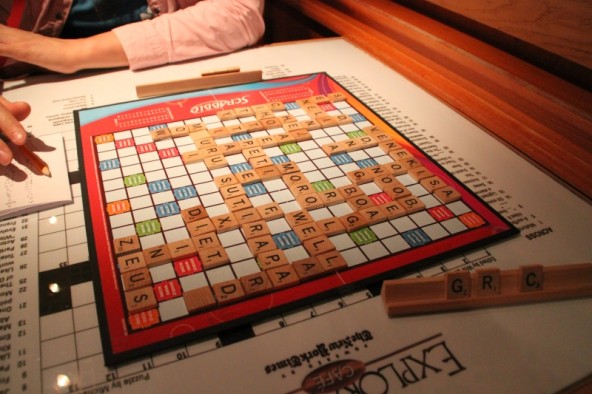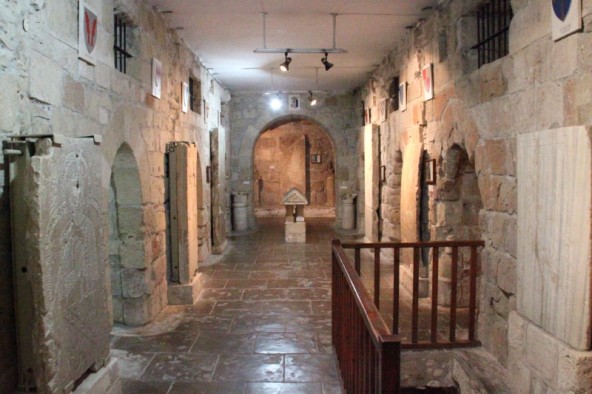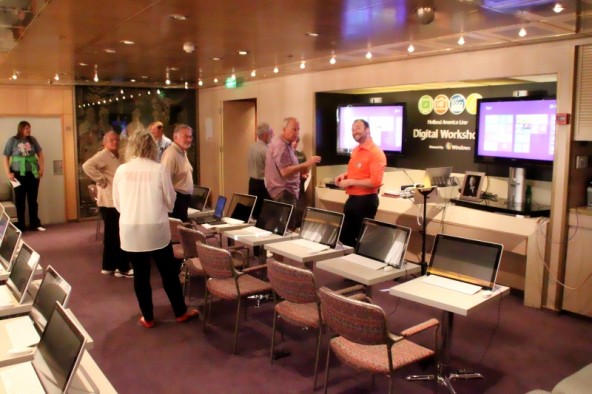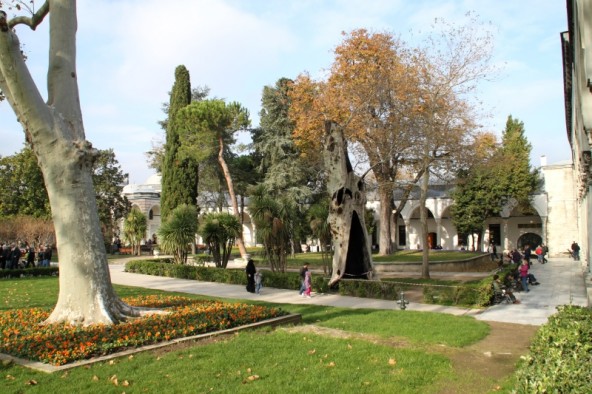Text and photos: Kalle Id
This is fourth and last part of Kalle Id’s report from a ten-day cruise exploring Turkey’s Mediterranean coastline onboard Holland America Line’s 1997-built Rotterdam. This time we explore Alanya in Turkey and Limassol in Cyprus, before a return to Piraeus for the end of the cruise. Read the first three parts of the report here.
Sunday, 17 November 2013: Alanya
The eight day of our cruise found us in Alanya, Turkey. I must admit we had quite heavy preconceptions of the place, as the Finnish reality TV series Matkaoppaat (literally “The Travel Guides”) has mostly been filmed there. Intentionally or not, the series gives the impression of Alanya as typical tourist trap with little to no actual tourists attractions. Hence our primary goal was to seek out the offices of Detur, the travel company Matkaoppaat is made with. (Incidentally, the Matkaoppaat format has been invented in Finland).

With this preconception in mind, imagine our surprise when we were greeted by a sight of an old hilltop fortress and an old town surrounded by walls clinging to the side of the hill (there was admittedly a new tourist town next to this, but even so). In fact, Alanya has a long, fascinating history, including a period during the antiquity when it was a base for pirates. And pirates, as we all know, are always cool.
Before we could set out to the delightfully warm town, there was one more thing to be done onboard: the now-traditional “our toilet is not flushing properly” -complaint to the Front Office. This accomplished, we set out of the ship to explore the older parts of Alanya.
Instead of taking a bus or taxi, we decided to climb the hill of the old town up to the fortress on top. This proved to be rather interesting, as we lost sight of the sings pointing the right way at some point. A local child pointed us at the direction of he claimed was the castle, which never-the-less led to what was essentially a dead end. There a man, who at least appeared to be living at the house on the end of the path, agreed to guide us further to the top – literally climbing up the rock face of the hill. Some of the way up our guide decoided we could clear the rest of the way ourselves and asked for payment.
In hindsight, the whole thing was probably a set-up. The local children apparently had a little fun in misdirecting tourists (this was not the only time during this single day that we were sent to the wrong direction by them) and the local house-owner made some extra money by taking tourists way up the hill by a very non-conventional route. But we just couldn’t be mad afterwards. The climb in itself was a brilliant experience, but it was nothing compared to when we stopped near the top to rest for a bit and at that same moment, call to mid-day prayer started from the town’s numerous mosques. Standing there, slightly our of breath, listening to sound of dozens of calls to prayer mixing and echoing around the town was simply sublime.

Perhaps not surprisingly, we were not the only people who had ended up taking the unconventional way up the hill. Near the top we saw two other people climbing up, who turned out to be Olli and Liisa, the other Finnish couple onboard the Rotterdam. We made our way towards the fortress on the hilltop together, exchanging experiences of cruise ships – and being Finns, naturally discussing cruise ship saunas – before going our separate ways near the top of the hill.
After the experiences of climbing up the hill, the rest of the day was… I won’t say a disappointment, but certainly not as interesting. We walked to the fortress atop the hill, but did not go in as we were by this point suffering from a difficult museum overdose. We walked around the hilltop, finding the correct way down and made our way to the newer part of the town (this time ignoring the “advice” of the local children). We never found the local Detur office, but we we consoled by our discovery of a Finnish restaurant. Which, fortunately, was closed.
Once back onboard, we enjoyed a little lunch at the Lido (mostly salad), followed by a dip in the pool. Later on, we also tried the ship’s self-service laundry for the the first time (this was in fact the first time we tried the laundry on any ship). We even recieved a call that our toilet ad been fixed.

The highlight of the evening for today was the Auction for the Philippines, arranged by the crew to raise money for the Philippines resque effort after the devastation of Typhoon Yolanda (Haiyan). On offer were such interesting items as various behind-the-scenes tours of the ship. In the end the auction raised $1500 for the resque effort. We never actually went to see it, unfortunately, having just this evening discovered that the Explorations Café on deck 5 had a bunch of board games on offer. This evening’s programme for us included a go at the US edition of Trivial Pursuit (much easier than the UK edition we played some years ago on the Thomson Destiny) and several rounds of trilingual Scrabble.
Monday, 18 November 2013: Limassol
The next day dawned with us moored at a port outside Turkey for the first time in a week, with Limassol outside our balcony. Unfortunately, here the harbour is somewhat removed from the city center. A shuttle bus was available for the rather steep price of $12. If one walked out of the cruise terminal, there was a bus running to the city with the much more sensible price of 2 €. As it turned out, the city was a c. 45 minute walk away, so we took up that option.
En-route to the city we passed a Lidl and decided to go in to buy some water and something to nibble on. Those of you who are not familiar with Lidl, it is a German supermarket chain, with shops in pretty much every country of the European Union. All Lidl stores follow the same basic concept as closely as possible, selling the same merchandise and even with the stores laid out as identically as possible. It was a more than a bit weaird experience going into a supermarket surrounded by palm tress and finding it virtually identical to our local Lidl in Helsinki.

In the center of Limassol we took a look at the local shopping streets. Cyprus seems to have been badly hit by the current economic downturn, as there were a lot of empty shops. On the other hand, the local stores also sold some of the best-looking clothes I have seen in a long time… but unfortunately none of these were large enough for 190cm (~6 foot 3 inches) tall man with a bit of extra padding around the waist. What we did discover was a store selling ”genuine copies” of Orthodox christian icons, one of which made a fine gift for my mother, who is – amongst other things – an amateur icon painter.
Having pretty much exhausted the few interesting shopping chances there were, we decided we just had time for a visit to the Limassol Castle before we needed to head back onboard the ship. The castle was erected by Guy de Lusignan in 1193 after he had become the King of Cyprus(having lost the crown of Jerusalem that year), although other sources claim Richard the Lionheart had married Berengaria of Navarre at the same castle already in 1191. Beneath the castle are the remains of an early christian basilica. The current form of the Castle dates, unsurprisingly, from the Ottoman era.

Today the Limassol Castle houses the Cyprus Medieval Museum. Though interesting in itself, the museum does suffer from the common problem of archeological museums (that I have already touched upon in previous parts of this report) in that it did not give proper explanations of why the items on display are important. The worst example of this were a collection of crusader-era gravestones, which had text in them, but no explanation in any language of whose gravestone it was, let alone what the text in the slab said.
When we got back onboard, we were surprised to discover three crewmembers in our cabin fixing out toilet – a day after we had been told by the front office it had been fixed. (Although in hindsight we maybe shouldn’t have been surprised, considering how shoddily the whole affair had been handled so far). The plumbers left, saying they had “replaced everything” and that it was now fixed. (It wasn’t).
Tonight was the second formal night of the cruise. We considered going to the main dining room, but the menu there was not particularly inspiring and the long wait for food we had experienced on the previous visits did not inspire for us to give it a try, so we once again headed to the Lido for self-service instead. We ended up dining there with one of our companions from our Istanbul visit to the main dining room, (one of the three people in our table back then named) Peter. Peter was on a longer circuit of the cruise, staying onboard for the second ten-day leg to the Holy Land that followed our Turkish discovery.

After dinner we headed again to the Explorations Café for some board games, including a delightful (and very fitting) little game named Rotterdam – The Port of Europe. This was about transporting cargo to Rotterdam’s different harbours, rather than anything more cruise-like. After our game we headed to the Wajang Theatre to see Wolverine. Not a movie I was particularly interested in, but Maria wanted to see it and when could I say no her?
Returning from the movie to our cabin and ready to retire for the night, we discovered that, once again, our toilet was not working. Now I admit that at this point I rather lost my temper and stormed to the Front Office. Sadly, the approach of going there and yelling at the staff proved much more effective than our previous civilized approach and a plumber came to look at the toilet almost immediately, promising to come back the next morning for a better look.
Tuesday, 19 November 2013: At Sea
On our final full day of the cruise we woke up to the onslaught of plumbers, who did something to our toilet and afterwards it worked fine again (for the moment). This was followed by breakfast and lazing around on deck, relaxing after the intense discoveries of the previous days.

To pass the time, we decided to attend one of the Techspert Time lectures onboard. Sponsored by Microsoft, these lectures are the only free-of-charge technology programme at sea. Admittedly, most of the lectures seemed to be of the type rather lost on tech-savvy people like us, but this afternoon’s Meet Windows RT proved interesting. I still won’t buy one, but thanks to Techspert Tony my decision is much more informed than it would have been otherwise.
In the afternoon had a look at the shops, buying traditional ship mugs (two mugs for every cruise we’ve been on) but deciding to skip the rest. I do slightly regret not getting an HAL Barbie doll.

The rest of the evening passed according to the established pattern. We skipped the finale of Dancing with the Stars at Sea (eww!), opting instead for more board games, followed by a dinner at the buffet and after that, the packing.
For the grand finale of the final night onboard, we headed to The Mix, where piano entertainer Les was giving a request night. He didn’t know Sparks, the favoured band of two MaritimeMatters writers (but promised to look into them). He did, however, treat us to an absolutely splendid piano version of David Bowie’s “Heroes”.

Wednesday, 20 November 2013: Piraeus
The final morning onboard dawned in Piraeus rather gloomy, as we were being passed by the remains of the storm that had lashed Sardinia just a few days before. Our day begun suitably to the overall theme of the cruise, with the toilet not working. At this point we decided to sod it, and leave it as the problem of the next inhabitants of the cabin (sorry, whoever was in 6179 for the next cruise).
Disembarkation went smoothly and we were soon on our way for our six-interchange trip home (okay, most of those interchanges were in the Athens Metro but even so).
So, I guess it is time for closing remarks:
Except for one thing, this would have been the best cruise I have ever been on. For the first time on a “proper” cruise ship, I felt the onboard product consistently exceeded that of the Baltic Sea ferries I have grown up with. But then there were the problems with our toilet and the way the Front Office staff handled our complaints. As said, the toilet was never fixed. We were never offered any kind of compensation, and we were at least once downright lied to, with claims that our toilet had been fixed when in fact it had not been. I can understand that something can be difficult to fix, but then for crying out loud be honest about it and don’t lie to your passengers.
If we forget the issues with the toilet and the Front Office staff, this was a superb cruise. The destinations were interesting and educational, the entertainment was very good, the food ranged from okay to great (though food hygiene, at least in the buffet, could have been better). After all the great experiences I had on the cruise, I’d love to say it was the greatest cruise I’ve ever been on. But I can’t.
Previous parts of the report:
- Turkish Discovery on The Rotterdam, Part One
- Turkish Discovery On The Rotterdam, Part Two
- Turkish Discovery On The Rotterdam: Part Three
This report is originally published in MaritimeMatters.com.
Finnish version of this trip report is published in Finnish maritime magazine Ulkomatala.
About the author
Kalle Id is a Finnish maritime historian, photographer and journalist, with a Master’s Degree in history from the University of Helsinki. He is a regular contributor for Cruise Business Review and Ulkomatala. In addition, he has contributed to magazines such as Ships Monthly, MaritimeMatters.com, Ferry & Cruise, and Laiva. He is an author of two books on maritime history: Silja Line from De Samseglande to Tallink (Ferry Publications 2014) and Tallink – The First 25 Years (Ferry Publications 2015).



















